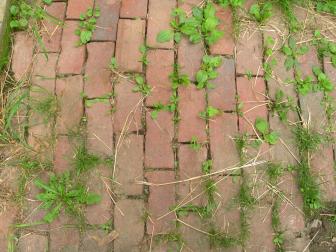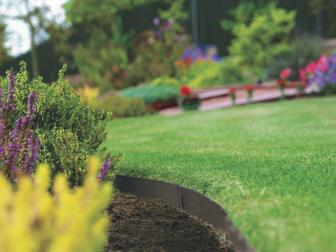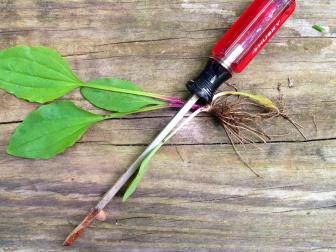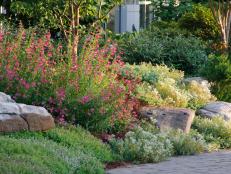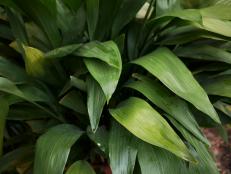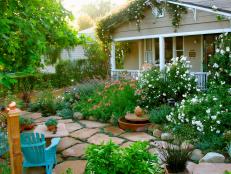Garden Edging Ideas to Prevent Weeds and Grass in Flower Beds
There are a variety of ways to create a border between your lawn and your flower beds. Explore the options and decide what’s best for your yard.

Lawn edging comes in an assortment of materials and a range of price points, including FREE. You can opt for all-natural chemical solutions to create a flower bed border that keeps grass out of flower beds or you can create a physical border made of rocks, wood, steel, vinyl, etc.
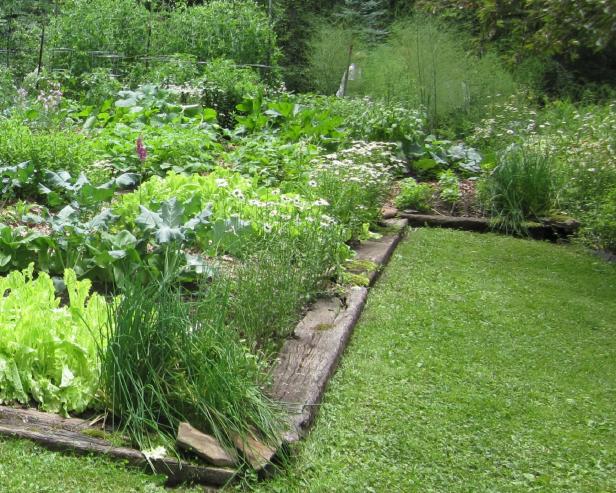
Julie Martens Forney
Landscape timbers offer an easy DIY flower bed border that keeps grass from invading planting areas.
No-cost methods of creating a flower bed border involve simply using your muscles and regular maintenance. One of our favorite flower bed borders is an English border — basically a moat that separates the flower beds from the lawn. The other free method is good old-fashioned weed pulling.
Chemical Solutions to Keeping Grass Out of Flower Beds
Yes, there are herbicides that kill only grasses without harming other kinds of plants or causing serious environmental problems. Any independent garden center will carry two or three different brands. But before purchasing, be sure the label clearly says it is for the control of grasses alone. Use according to the directions; on the package; these herbicides work best when the grasses are small or young, and actively growing — not cold and dormant, or hot and dry, or starting to flower.
Herbicides are not everyone's first choice for weed control. In addition to being expensive and not entirely easy to use safely, they also have possible side effects both on nearby plants and your own health. But even some of the biggest opponents of commercial herbicides will occasionally use them for hard-to-kill weeds like poison ivy.
If the thought of commercial herbicides makes your skin crawl, there are greener and cheaper alternatives. One of the most popular is spraying a solution of vinegar, salt and dish soap where you don't want grass or weeds to grow. Use a highly acidic vinegar found at hardware and garden stores as opposed to the 5 percent acetic acid in most household vinegar. Keep in mind there are downsides to this method.
Make Your Own Natural Weed Killer
Tackle troublesome garden weeds the sustainable way.
Unlike some chemical solutions, this formula is not built to work its way into the root system, meaning multiple treatments will probably be necessary to keep weeds at bay. And even though it is all-natural, be careful about getting the vinegar solution on your prized plants as all that acid could kill them, too.
Hardscape Borders
You can get creative with a physical border and make it part of your landscaping design. Consider bricks, concrete pavers or terra cotta tiles. Even wine bottles sunk neck-down could make a nice border. Make sure the bottles are sunk deep enough to keep grass from growing underneath them but are still easy to mow next to and not likely to be chewed up with a string trimmer. If you want a physical border but are more into a seamless look, long bands of vinyl or metal edging pushed partway into the ground can hold back weeds and stay concealed with mulch and plantings.
20 Garden Edging Ideas for Lawn Borders 20 Photos
The best-dressed garden borders feature finished edges. Discover inspiration for your yard in our gallery of lawn edging ideas and garden border ideas.
When deciding what type of border to use, consider the style of your home and your surrounding landscaping. You want the border to work with your home's architecture and natural landscape so it will amp up your curb appeal and overall design. The border doesn't have to match your house but should be cohesive with the materials your home is made of and its style. For example, modern architecture with xeriscaping is not often paired with traditional brick hardscaping. On the flip side of the coin, cottages with English gardens are not usually adorned with steel and concrete borders.
The Moat Approach
If you're looking for a no-cost method, an "English border" both looks and works well. An English border is simply a shallow ditch dug between the flower bed and lawn, typically with the side facing the lawn cut straight down for a crisp, clean look, and with the soil from the ditch thrown up into the flower bed. This style of border doesn't take long to dig the first time, especially when the soil is moist enough to dig easily. Keep a metal file handy to keep the blade of your spade sharp; it makes for easier digging.
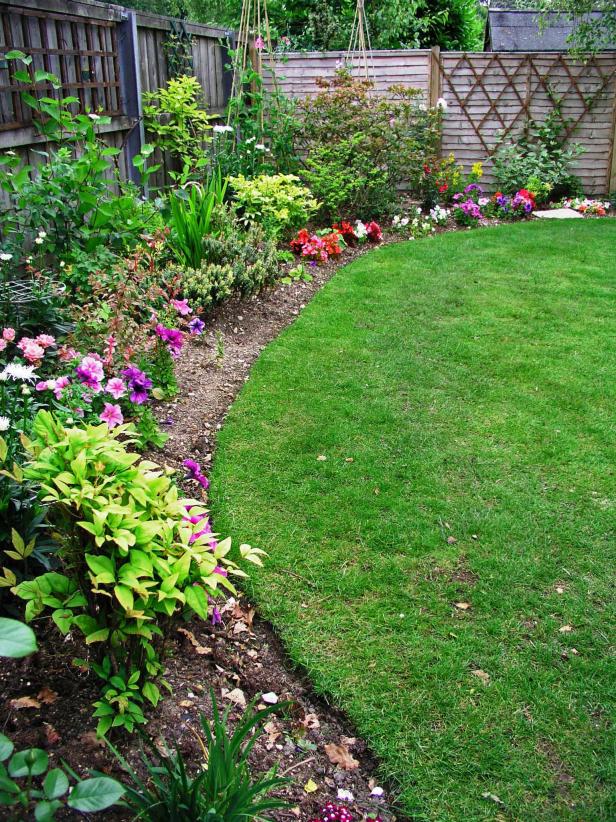
Image courtesy of Felder Rushing
Once established, a border ditch is easy to maintain or clean out when needed. It not only gives a nice edge to the lawn but makes spotting weeds easier as they first start to cross the ditch. And with this method, you'll rarely have to use a string trimmer around the border like you would with a physical border; you can just mow right over the edge of the ditch.
Weeding
Rarely will you hear someone say they enjoy pulling weeds. But sometimes old-fashioned weed pulling is the best approach to riding your flower beds of unwanted growth. Pulling weeds is a lot easier a day or so after a good rain or watering. Make sure to grab the weeds when they are small before they get well-established and deeply rooted.
Fast and Easy Weeding Tips
Make this garden chore fly by with these simple tricks.
So, put on your favorite playlist or podcast and listen as you weed, and the task will be more enjoyable.






